Florida’s beaches near Daytona are now deep in aging seaweed at the high tide mark. It is nearly all one species, Sargassum; edible but not the tastiest of sea vegetables. It is true that nearly all seaweeds are edible if harvested from clean water. When I lived in Japan an annual environmental demonstration was to develop photographic film from unaltered water taken from Tokyo Bay. Instead of taking a few minutes, the developing took several hours but the point was made: The bay water was polluted. Generally said there are only two non-edible seaweeds in North America.
The first is Desmarestia ligulata. It is laced with sulfuric acid but is used to make pickles. You can find it along the northwest coast of the United States. You’ll know it when you find it because it will burn your mouth. The other in North America (and Central America) is Cyanobacteria which is found in the Caribbean and linked to ciguarera poisoning. It’s not really a seaweed but is a blue-green algae found in the warmer waters. It is why one should never eat older barracuda. I should add never eat blue-green algae from fresh water either nor fish from a fresh water pond with a lot of blue-green algae. They are not on the menu. As for other parts of the world, there might be some toxic red seaweeds in the South Seas.
Since most seaweed is edible, and nutritious, why isn’t it consumed more often? Taste and texture. I’ve collected Sargassum here in Florida and prepared it many ways. Semi-drying and frying isn’t too bad but bladderwrack is better, sea lettuce better still. The latter makes very nice salads. Not surprisingly most land animals including birds don’t like seaweed. However, it does make good mulch and fertilizer. So while one may not use it directly in the diet it can still help sustain you with uses in the garden. During Victorian times it was highly used in English agriculture. Here are some of my articles on seaweed: Bladderwrack, Caulpera, Codium, Gracilaria, Sargassum, Sea Lettuce, and Tape Seagrass.
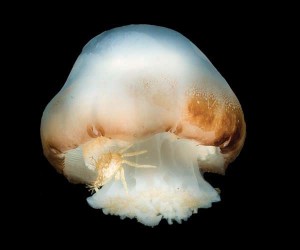
Stomolophus meleagris, photo by Deep Sea Waters
While on the topic of the beach — I was there three days for a festival, a birthday, and Veterans Day — many jellyfish are edible, including some that are found in local waters. I had a friend from Taiwan who never ordered from the menu at Chinese restaurants. It was always off-the-menu and then after much discussion with the waiter and sometimes the chef. One of those chats produced a dish of jellyfish. I was hooked. It was very tasty and jellyfish can be caught while casting for other fish. (I like castnetting and am a castnet junkie.) While a substantial food I’m not sure jellyfish would qualify as a staple because catching them by hand is by chance (which does increase however when in season.) They are also mostly water and need to be dessicated immediately, not a small process. It all depends on how hungry you are and how many of them you have. You should get them live out of the water, not dead on the beach. To read about jellyfish go here.
Also noticeable seaside was Sea Oats, edible but protected because they help secure the dunes. (You might want to consider as an alternative Wood Oats which are found inland and not protected.) Also hard to ignore was sea purslane. When I was walking along the beach I noticed how red it. Technically it’s not a seasonal plant because it grows all year but it does favor the spring putting on a lot of new shoots. By the time autumn falls the plant has been isolating salt from the water which turns its stems red. Thus one uses green stems as greens (boiled, roasted or in a fish or the like you are cooking) and the red stems for salt or seasoning. The older stems also get a woody core so one usually does not eat them. Young greens can be tossed right on the grill and wilted for a wonderful flavor. Sea purslane will also happily grow in your non-salty garden. It competes successfully in salty areas but does not have to be in salty ground. If you grow it at home it is not salty. To read more about sea purslane go here.
 My classes this week were confined to the Native Plant Society, those folks who champion native plants and the reduction of non-natives. This included a talk Tuesday night and a walk about wild edibles on Saturday. Working with folks who know their stuff when it comes to plants keeps one on your tippy toes. I’d like to thank them for having me. This Sunday (17th) I will be in Jacksonville and have enough signed up to justify the long trip. The 23rd and 24th were supposed to be at a gathering north and west of here but I have not heard about it so I have added classes in Gainesville on the 23rd and Ocala on the 24th. Details are here.
My classes this week were confined to the Native Plant Society, those folks who champion native plants and the reduction of non-natives. This included a talk Tuesday night and a walk about wild edibles on Saturday. Working with folks who know their stuff when it comes to plants keeps one on your tippy toes. I’d like to thank them for having me. This Sunday (17th) I will be in Jacksonville and have enough signed up to justify the long trip. The 23rd and 24th were supposed to be at a gathering north and west of here but I have not heard about it so I have added classes in Gainesville on the 23rd and Ocala on the 24th. Details are here.
This is a reminder the Florida Herbal Conference 2014 will be held in Deland in late February. Also for the third year in a row I will be leading weed walks at the conference, a challenge in winter on dry ground. My walks are usually first thing in the morning when the air is cool and the coffee hot. Although it is the Florida Herbal Conference it draws teachers and students from all over North America. Two other Florida “locals” will be teaching classes besides the scheduled main speakers. They are Mycol Stevens of Gainesville, organizer of the Florida Earthskills gatherings — usually in early February – and Andy Firk who holds a wide variety of workshops throughout the year at his “Bamboo Cove” in Arcadia. Mycol’s name used to be Michael but he came to like mushrooms and other fungi so well he changed the spelling.
Though your foraging may drop off during the winter it’s a great time to study wild edibles with my nine DVD set. Each DVDs has 15 videos for 135 in all. They make a great Christmas gift. Order today. Some of these videos are of better quality than my free ones on the Internet. They are the same videos but many people like to have their own copy. I burn and compile the sets myself so if you have any issues I handle them personally. There are no middle foragers. And I’m working on adding a tenth DVD. To learn more about the DVDs or to order them click here.
And just when you thought the cooling weather made you safe from those pesky insects comes this Alfred Hitchcock-like story: The Invasion of the Ladybugs. Reuters, the Germany-based news agency, reports millions of ladybugs (Harmonia axyridis) are invading homes and businesses in parts of the U.S. eastern seaboard and Gulf Coast causing headaches for residents who are fighting the invasion with vacuum cleaners.
While harmless to humans, masses of the multi-colored invaders are a deemed a nuisance when they slip in homes through cracks around doors and windows. They can also stain curtains, upholstery and walls if squashed. A spike in the ladybug population is typical this time of year as they fly out of the farm fields where they help control other insects and seek a warm place to spend the winter. In their native Asia they usually overwinter in cliffs. The absence of cliffs attracts them to buildings. A mild winter followed by a rainy spring in the east and south created the perfect environment for the species, known as the Multicolored Asian Lady Beetle, to flourish in larger-than-usual numbers in some areas, said David Cook, an entomologist for the University of Tennessee and an extension agent in Nashville.
“It was a perfect insect storm,” Cook said. “They’re cute, but no one wants a lot of cute.”
To donate to the Green Deane Newsletter or Website click here.

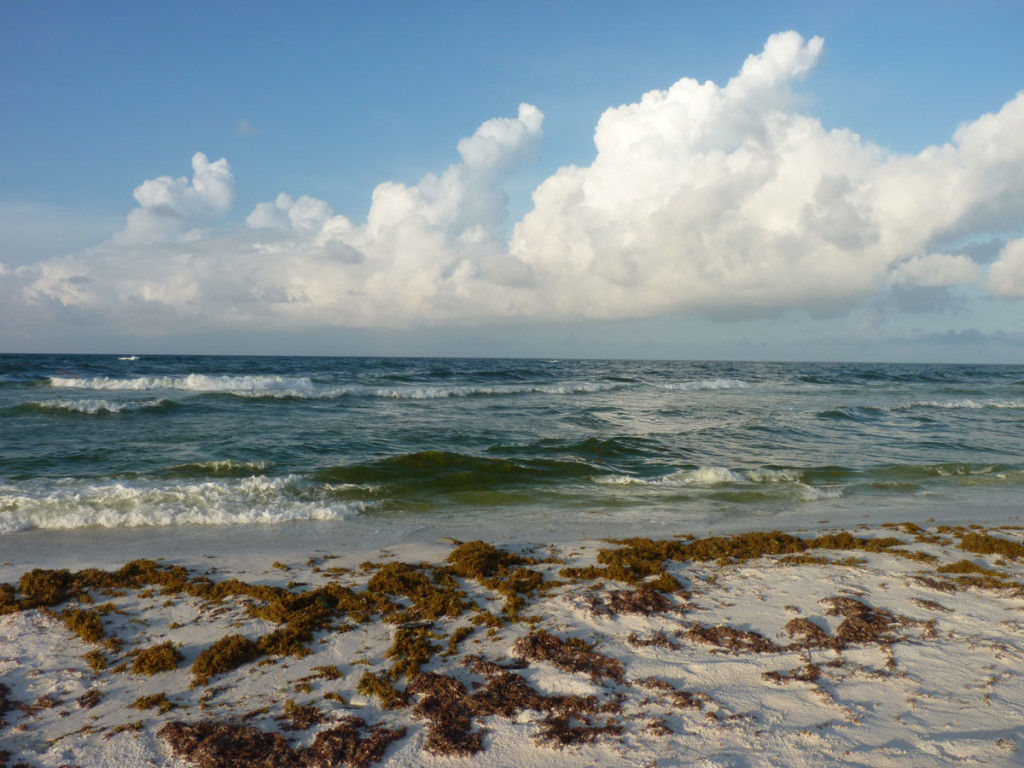
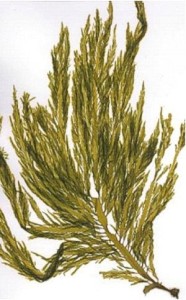
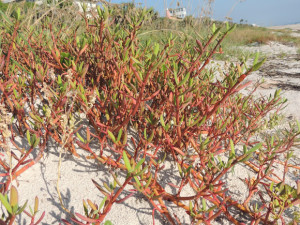
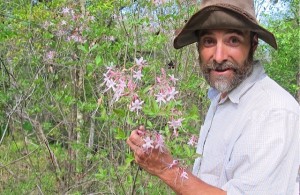
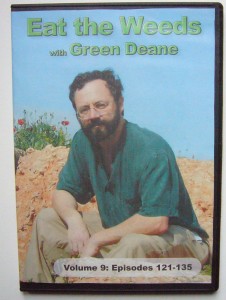
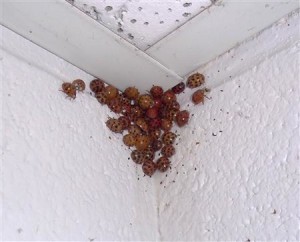

Have seen seaweed in attics for insulation.
It has been discovered the Asian lady beetle carries a parasite that is killing our native lady beetles.
http://www.nature.com/news/invasive-ladybird-has-biological-weapon-1.13011
just dropped in to say hello frm Ukraine.What to forage in winter when there might be a metre plus of snow ??
There actually can be many things. Some folks in Minnesota intentionally hold foraging classes in the winter. There are quite a few plants that stay green under the snow, or under the ice. There are also various tree buds.
Wow on a trip to fort desoto. We found some Natal Plums by the fort.
I taught a class today on staple vegetable plants for Florida, with a side feature on creating food forests. Your name came up multiple times. Turns out some of my students had attended your foraging classes and really enjoyed what they heard and learned.
Keep up the good work. I’m gonna go look for seaweed now.
With respect to “Insect Invasion ” I may give two incidences. My father was able to collect about a pound of honey besides a good amount of wax from a bee hive hanging from the roof of his simple shop. I remember how careful was every one entering the shop for his own safety not to disturb that community at work as well as the final moments of “harvest” when intensive smoke from “Tulih wood” was filling the space to repel the exhausted bees. “And thy Lord inspired the bees to build their cells in the mountains, on trees, and in what they erect”..Holy verse. Again on the white smoothly coated ceiling (use of slaked lime -much availale in Kassala town where I’ve lived most of my early life enjoying “NATURE” ) you would be interrupted with rectangular nests with perhaps more than two compartments and an entrance all well designed by creatures to secure safe homes for the development of their new borns. I witnessed the process of collecting minute balls of mud by these creatures from the prephery of poddles during the rainy season and their transference to the building site. Once, on peeping through one compartment I found a green worm. Alas, now according to my humble knowledge, I’d call those creatures “Apocrita chalcid wasps” and what I thought to be a green worm was a caterpiller obtained by one parent , probably the female, as a prey to sustain larvae when hatched inside it. How wonderful Mother Nature is!